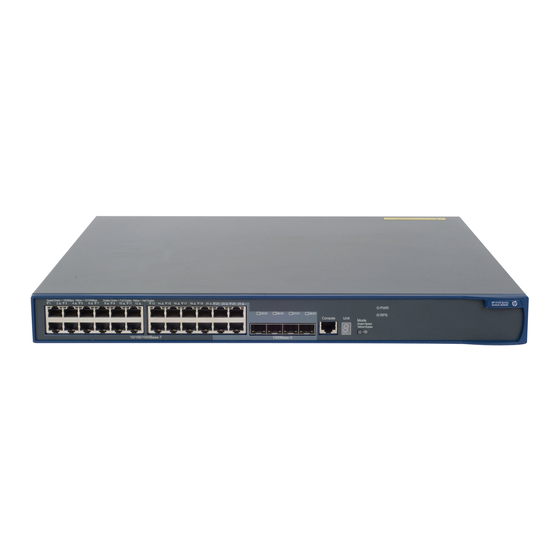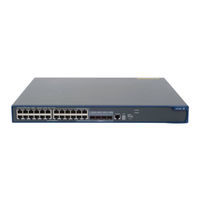
HP 5120 EI Series Manuals
Manuals and User Guides for HP 5120 EI Series. We have 5 HP 5120 EI Series manuals available for free PDF download: Configuration Manual, Lan Switching Configuration Manual, Installation Manual, Specification, Datasheet
HP 5120 EI Series Configuration Manual (304 pages)
Table of Contents
-
-
AAA Overview11
-
-
-
-
-
-
-
-
VLAN Assignment107
-
ACL Assignment107
-
Guest VLAN107
-
-
-
Portal Overview118
-
-
-
-
-
-
-
PKI Overview197
-
PKI Terms197
-
PKI Architecture198
-
PKI Applications198
-
-
-
-
SSH2.0 Overview218
-
-
-
SFTP Overview241
-
-
-
SSL Overview251
-
-
-
-
-
Introduction277
-
-
-
Introduction279
-
-
-
Introduction280
-
-
-
-
Introduction288
-
-
-
Contacting HP298
-
Conventions299
-
-
Index
301
Advertisement
HP 5120 EI Series Lan Switching Configuration Manual (235 pages)
Brand: HP
|
Category: Network Router
|
Size: 2.45 MB
Table of Contents
-
-
-
Overview30
-
-
-
Overview40
-
-
-
Overview43
-
-
-
-
Overview115
-
-
-
Overview122
-
VLAN Types123
-
-
-
Overview155
-
-
-
Configuring GVRP171
-
Configuring Qinq183
-
Overview183
-
-
Configuring LLDP196
-
Overview196
-
Background196
-
Basic Concepts196
-
How LLDP Works200
-
-
-
Enabling LLDP201
-
-
-
Configuring MVRP213
-
Overview213
-
Enabling MVRP216
-
-
-
Contacting HP230
-
Conventions231
-
-
Index233
HP 5120 EI Series Installation Manual (92 pages)
Table of Contents
-
Cleanness19
-
Emi19
-
Laser Safety19
-
SFP+ Cables76
-
CX4 Cables77
-
Ports80
-
Console Port80
-
SFP Port80
-
SFP Port LED84
-
Power LED85
-
Documents89
-
Websites89
-
Conventions90
-
Index92
Advertisement
HP 5120 EI Series Datasheet (17 pages)
Table of Contents
Advertisement




